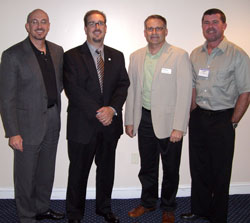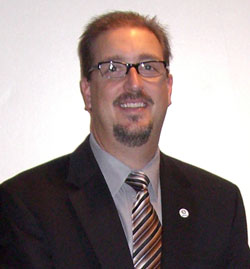A report from a major financial institution says the economic future of wind, solar, geothermal power, and biofuels looks very bright.
This story from the GroovyGreen.com web site has more details:
 U.S. Bank Morgan Stanley has estimated that global sales from clean energy sources such as wind, solar and geothermal power and biofuels could grow to as much as $1 trillion a year by 2030. In the meantime, the market may hit $505 billion in sales by 2020 — almost 9 times the level in 2005. Not a bad idea to invest, right?
U.S. Bank Morgan Stanley has estimated that global sales from clean energy sources such as wind, solar and geothermal power and biofuels could grow to as much as $1 trillion a year by 2030. In the meantime, the market may hit $505 billion in sales by 2020 — almost 9 times the level in 2005. Not a bad idea to invest, right?
Well, maybe. While it’s a sure bet that renewable energy will grow in percentage sales of global energy sources; there’s no telling how rapid or sustained such growth might be. Morgan Stanley was clear to indicate that current numbers are based on bullish investments, the rising value of oil, and current worldwide concerns over global warming. A change in any number of these factors could affect the industry.
“The bank was particularly bullish on solar power. Market penetration of solar in electricity generation could rise from levels almost too small to measure in 2005 to 11.2 percent in 2030, while wind power could go from 0.9 percent to 9.6 percent by 2030, it said.
The article goes on to says that the cost of solar power would go from the current $8 per Gigawatt installed to just $1.60 by 2030. Market penetration for ethanol and biodiesel could go from about 1 percent now to 21 percent by 2030… if vehicle fuel efficiency for cars continues to climb.



 It seems even entertainers can’t escape the momentum behind the growing renewable and alternative energy movement. Singer-songwriter
It seems even entertainers can’t escape the momentum behind the growing renewable and alternative energy movement. Singer-songwriter  The biggest news for the “Great Race” organizers so far is the prospect of
The biggest news for the “Great Race” organizers so far is the prospect of  Next year, marks the 100th anniversary of the 1908 New York to Paris
Next year, marks the 100th anniversary of the 1908 New York to Paris  This is the first in a series of MPG Challenges, created in partnership with Hybridfest, Inc., organizers of the nation’s largest hybrid car festival. Bill Ewing, chief executive officer of
This is the first in a series of MPG Challenges, created in partnership with Hybridfest, Inc., organizers of the nation’s largest hybrid car festival. Bill Ewing, chief executive officer of  By a 7-2 vote, the Chesapeake, Virginia city council has given the green light to what will be the nation’s largest biodiesel plant.
By a 7-2 vote, the Chesapeake, Virginia city council has given the green light to what will be the nation’s largest biodiesel plant.
 While we’ve been listening to people talking about when someone will build a commercially viable cellulosic ethanol production plant one company has actually gone ahead and done it. That’s what
While we’ve been listening to people talking about when someone will build a commercially viable cellulosic ethanol production plant one company has actually gone ahead and done it. That’s what  One of the sponsors for the Cellulosic Ethanol Summit and Domestic Fuel coverage of it is the
One of the sponsors for the Cellulosic Ethanol Summit and Domestic Fuel coverage of it is the